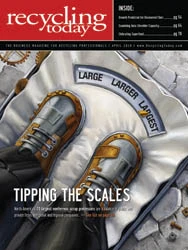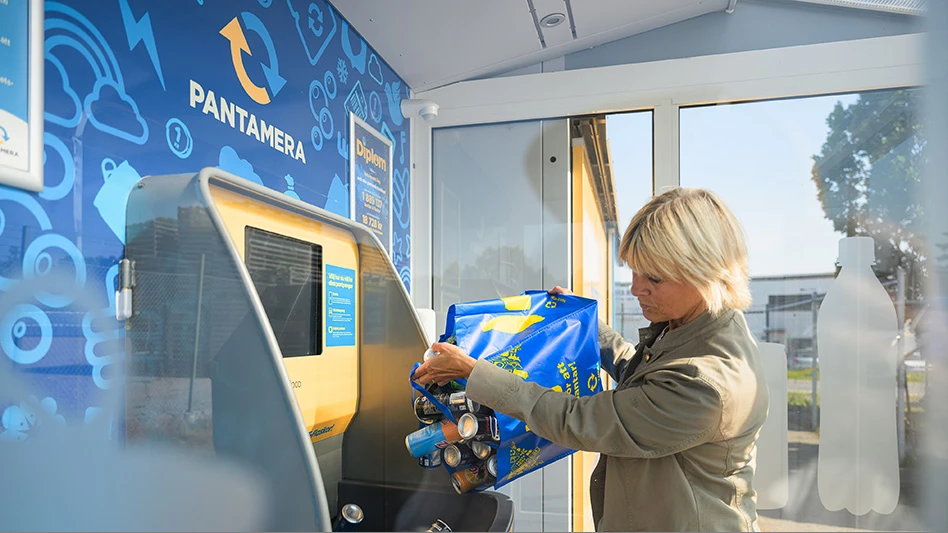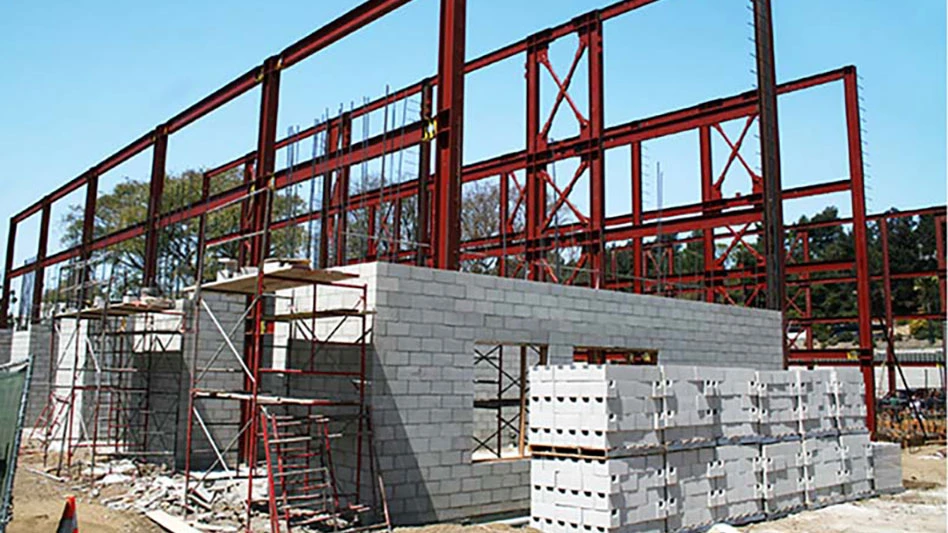Competition is what sets free market economies apart from planned ones, and very few business owners like to be told they should avoid expanding their businesses because the competition is already fierce.
From a distance, though, economists have identified several cases when competitors have rushed to invest to serve the same finite market and other cases where a market has constricted to a point where there was too much capital equipment deployed to serve it.
A term sometimes applied to these situations is overcapacity, and it is a word that both the steel and the auto industries have heard at various times during the past three decades.
A great many scrap recycling companies have invested heavily in auto shredders in the past five years. The question on the minds of many is to what extent has this combined investment led to an overcapacity situation in the metals shredding sector.
A CAUTIOUS DIAGNOSIS
Labeling a business sector as being in a state of overcapacity is subject to scrutiny for several reasons. The cyclical nature of the economy provides one critical variable and can “cure” overcapacity shortly after it has been diagnosed.
In a 2002 article in the economics journal Challenge, University of Massachusetts professor of economics James Crotty observes, “There are no official data on global excess capacity. There is not even a consensus on how it should be defined and measured.”
Crotty’s article focuses in part on the condition of the steel industry as it existed in 2002. He estimates that at that time “excess capacity in steel hovers near 20 percent.” But his essay was published just as China was about to lead the charge to one global record-breaking steel producing year after another.
More contentious is the notion that because overcapacity has been diagnosed, companies within that sector should cooperate to find a solution. To an extent, anti-trust laws rule out some forms of cooperation, while the competitive nature of business decision makers provides another natural barrier.
In the scrap recycling sector, a desire to remain competitive was a key incentive for the massive investment in auto shredders in the past several years. The fallout from the sudden downturn of 2008 and what was considered a year of modest scrap flow in 2009 has been some shredders shutting down and many running for far fewer operating hours.
Recyclers report varying regional conditions, with some more convinced than others that the total number of shredders will be reduced even further by the end of this year.
IN THE VALLEY
A shredder operator in Texas who asked not to be identified is convinced too many automobile shredders have been built too quickly in his state and that not all of them will survive.
“There are now seven shredders in the Rio Grande valley—one in Mexico and six on this side,” he says of the Texas border area running from Brownsville to Laredo. “They’re all struggling; I’ve been told one or two are shut down or for sale. When it’s said and done, there’ll only be three left, in my opinion.”
Several companies that operate more than one shredder in a metropolitan area have reportedly shut down one or more plants and consolidated shredding operations at fewer locations. Examples reportedly include Sims Metal Management in the Chicago area and SA (SimsAdams) Recycling in Southern California, which has reportedly idled its Etiwanda, Calif., shredding plant until flows improve.
In Spencer, Iowa, Dan Wycoff of Shine Bros. Corp. does not identify any shredding plants in the Hawkeye State that have shut down entirely. “Everyone’s running at partial capacity,” he says. “Shredders are probably running at less than steel mills, which are at about 68 or 70 percent capacity. I don’t think auto shredders are running that well, which probably creates part of the supply and demand gap.”
Both the Texas recycler and Adam Weitsman of Upstate Shredding, Owego, N.Y., say shredding plants built with borrowed money when the market was at its peak are the likeliest candidates to struggle now.
Shredder operators have differing viewpoints on whether now is the right time to be operating a smaller shredding plant or a super-sized, large-volume shredder.
“Your medium shredders, the guys who want to shred from 4,000 to 6,000 tons per month, they’re doing fine,” says the Texan. “They’re out in the country and they’re catching the cross-traffic before it can get to the metropolitan areas and the [super-sized] shredders. The big corporate super-sized shredders are not making much money, except maybe some of those adjacent to a steel mill.”
Says Wycoff from Iowa, “I think in this market, if you’ve got a plant that was undersized two years ago, you’re probably in better shape today.”
Weitsman runs one of the largest shredding plants on the market, but credits his company’s customer service techniques and the geographic expansion of its buying territory for keeping his scrap flows coming in.
“Some shredders can run at 5,000 tons per month and be profitable, but other operations can’t be profitable at under 15,000 tons,” says Weitsman. “It all depends on the setup that you do. We process high tons with lower margins—that’s the way we set it up.”
Price volatility and reduced flows have created the recent challenges, but, in the meantime, shredder operators have deployed various strategies to try to ensure that their shredding plants remain a viable, profitable part of their businesses.
COPING STRATEGIES
In his 2002 essay, Crotty writes that allowing the market to erode away at an excess capacity situation can be painful for those involved. “The mainstream theory of perfect competition is primarily concerned with the blissful state of perfectly competitive equilibrium, not the messy and often destructive out-of-equilibrium process that is supposed to create it.”
Part of the “messy and often destructive” process Crotty describes could prove true relative to the auto shredding sector if there have been too many shredding plants built. “Most productive assets are not liquid; they are significantly immobile or irreversible. Thus, exit from an unprofitable business is not ‘free’ but involves a substantial loss in the value of the firm’s capital,” Crotty writes.
Avoiding that painful loss of capital has become the focus for auto shredding plant operators, with the recyclers contacted for this story offering several examples of what they see as their key strategies.
When discussing how to remain viable in the current market, the Texas recycler says one variable that can separate a winner from a loser is energy costs, while another variable pertains to purchasing scrap intelligently. On this second point, the Texan says smaller companies with hands-on owners have an advantage over larger corporations. “Even the corporate guys I know tell me that for family companies, it’s their day right now.”
Weitsman also singles out corporate ownership that is hands-on and retains a lean management structure as helpful in the current environment. “We have some really well-run shredders up here, such as the Grimmel family at Rensselaer Iron & Steel near Albany. The owner and his son can shred a lot of tons with only a few people. We have other competitors with 30 vice presidents—their cost per ton to shred is very high.”
Operating techniques at Upstate Shredding have included being open seven days per week from 5 a.m. to 12:00 a.m. to accept loads of scrap. “In May, we’re going to go to 24 hours per day; we’ve got to do what the customers need.”
That also has included investing in more trucks and containers, says Weitsman. “It’s one thing to quote the customer; it’s another to offer to pick it up tomorrow. We keep buying trucks and containers to keep the flow. Our goal here is to shred 40,000 tons per month, and we’ve been able to do it consistently for two years. Now we’re heading toward 50,000 tons per month.”
Investments in downstream sorting have proven to be good decisions, say shredder operators. “Your downstream system is probably more important in lean times than it was two years ago,” says Wycoff. “If you can make a better nonferrous product, you’re going to be more successful in this market. You want as good of a downstream system as you can afford.”
A LOOK AHEAD
The degree of optimism among shredding plant operators was not uniform and, as can happen in the volatile world of secondary commodities, can vary from day to day.
The shredder operator in Texas says he sees a further shakeout in the number of shredders in the Lone Star State and was further dismayed to read about two large shredders being planned in the neighboring state of New Mexico, seeing trouble ahead for at least one of those plants.
He says he’s not sure what to make of companies installing new capacity right now, but says any new buyers would be wise to consider smaller plants. “I’d be very cautious about big shredders.”
His view is closer to lining up with an observation Crotty had about why excess capacity situations can linger. “One more insight is needed to understand why excess capacity has been so durable. Firms that decide to stay in the game must continue to invest in the face of deteriorating industry conditions in order to have any chance of winning the war for survival,” Crotty writes.
In Iowa, Wycoff says Shine Bros. Corp. is striving to keep its shredder fed to satisfy the ongoing healthy demand for shredded grades of scrap—which is a positive part of the story. “Anything we can shred without lowering the quality of the product we’re running through the shredder.
Even though Iowa has seen several new shredding plants installed in the past 10 years (including the Shine Bros. unit in 2002), Wycoff does not label the Hawkeye State as being in an overcapacity situation. “I would say right now there is a pretty good balance between shredders and the demand for the product coming out of them,” he comments.
Super-sized shredding plant operator Weitsman says Upstate Shredding’s approach is full-speed ahead. “Our flows right now are the strongest they have ever been,” he remarks. “Some of it is because we’ve reached out farther to grow our customer base, but industrial accounts have picked up as well. I’m excited about this year.

Explore the April 2010 Issue
Check out more from this issue and find your next story to read.
Latest from Recycling Today
- CP Group announces new senior vice president
- APR publishes Design Guide in French
- AmSty recorded first sales of PolyRenew Styrene in 2024
- PRE says EU’s plastic recycling industry at a breaking point
- Call2Recycle Canada, Staples Professional expand partnership
- Circular Services breaks ground on north Texas MRF
- Tariff uncertainty results in choppy nonferrous scrap flows
- CATL, Ellen MacArthur Foundation establish battery partnership






